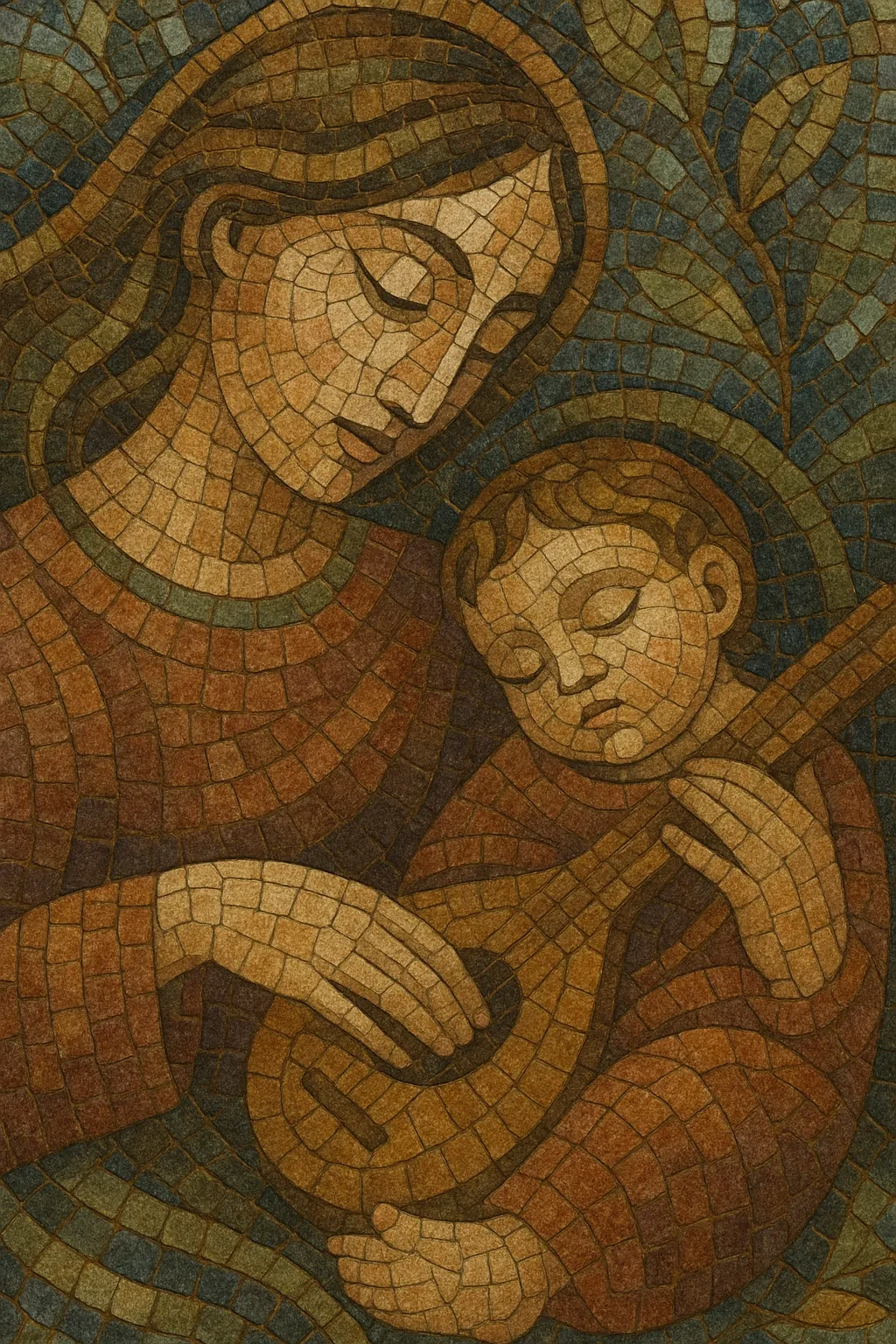Iavnana is a traditional Georgian lullaby genre, sung primarily in domestic settings to soothe and protect infants and young children. Its name fuses the Georgian word for violet (ia) with the archetypal lullaby refrain (nana), and many texts include these characteristic vocables such as “iavnana” and “nana-o.”
Musically, iavnana tends toward narrow-range, modal melodies delivered at a soft dynamic and slow tempo, often in free rhythm or a gentle rocking meter. Performances are usually unaccompanied solo or small-ensemble singing, though simple drone-like accompaniment on Georgian lutes (panduri or chonguri) may be used. Texts are intimate and protective, sometimes invoking nature imagery or addressing benevolent spirits to guard the child.
Iavnana emerged within Georgia’s long oral folk tradition as a domestic lullaby form used to calm children and symbolically shield them from harm. The genre’s hallmark refrain—“iavnana”—and nature-inflected imagery point to deep folkloric roots that likely predate its earliest written documentation. Beyond sleep songs, some iavnana variants appear in healing contexts, where the lullaby acquires a protective or even apotropaic role.
From the 18th–19th centuries onward, folklorists and later ethnomusicologists began noting, transcribing, and recording iavnanas across different regions of Georgia. These efforts preserved diverse local texts, dialect features, and melodic types. In many households the tradition was maintained by women, passing from generation to generation as part of everyday family life.
While most iavnanas are intimate, monodic pieces with fluid rhythm and a limited ambitus, some communities render them in soft, two- or three-voice textures that echo Georgia’s broader polyphonic aesthetic. Modal inflections, drone implications, and gentle syllabic text-setting are common traits, with refrains and vocables providing recognizable anchors.
Today, iavnana lives on both in the home and on stage. Georgian folk ensembles and choirs include iavnanas in repertoires, while archival recordings and pedagogical projects keep regional variants in circulation. Modern interpretations preserve the lullaby’s quiet affect and protective symbolism, even when arranged for concert performance.


